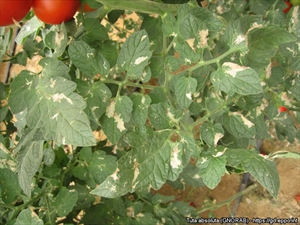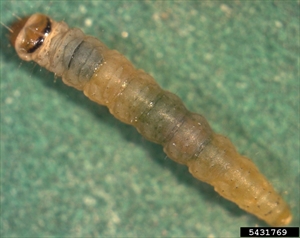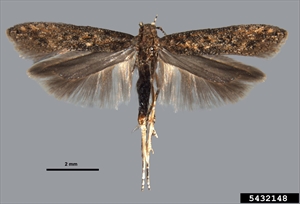-
Worldwide. Asia, Africa, South and Central American, Europe. Not in Oceania.
-
Very severe pest, mainly of tomato, but also potato, eggplant, capsicum, and wild species. Larvae attack flowers, mine new leaves, tunnel into stems, eat buds and young fruit. Plants looked scorched from a distance.
-
Eggs (about 250) on undersides of leaves, or on fruit; Larvae greenish or light pink when mature, up to 7.5 mm, with brown head. Pupates on leaf in a cocoon or in mines. Adults up to 10 mm long, wingspan 10 mm; forewings silvery-brown with black spots, hindwings fringed. Spread on seedlings, fruit; long distances on fruit, packaging materials.
-
Natural enemies: several wasp parasitoids and predators.
-
Biosecurity: tomatoes entering countries yet free from the leafminer should be certified free from the pest.
-
Cultural control: avoid over-lapping crops (leave minimum 6 weeks); weed (especially nightshades); check seedlings in nursery (crush by hand), and before transplanting to field; monitor regularly using pheromone (1/crop); stake plants; collect and destroy debris after harvest; cultivate soil to plough in pupae; crop rotation.
-
Chemical control: note, moth resistant to organophosphates, permethrin and pyrethroids, abamectin, spinosad. Use Bt, BUT rotate with, e.g., neem. For mass trapping (if >3-4 per trap) use sticky traps or bucket traps with water+oil+pheromone (up to 50 traps/ha).







